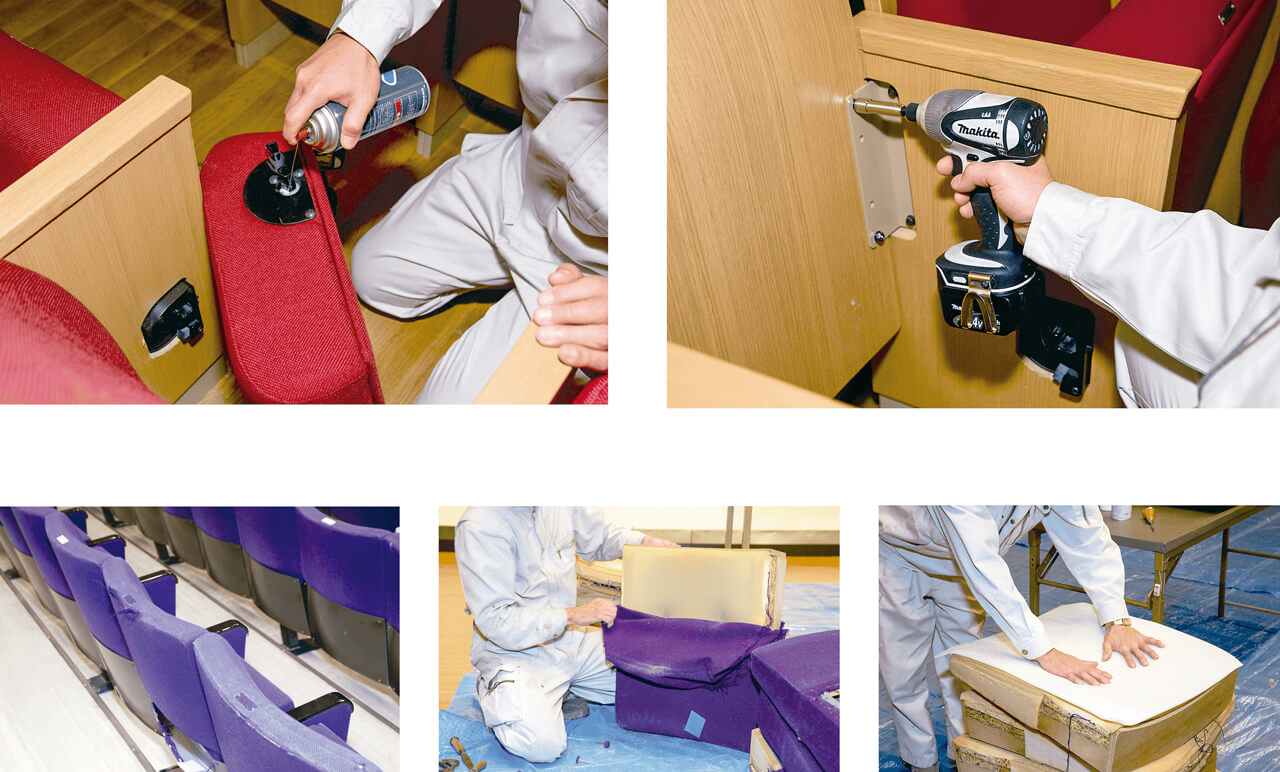Kotobuki installed the first telescopic platforms in Japan in the early 1950s. These were moving elements incorporating seats that, by means of folding mechanisms, folded, and unfolded on the platforms.
As these installations were in constant movement, good maintenance was necessary to guarantee their correct functioning, safety, and as the best formula for extending the useful life of the installation.
This need was transformed into a philosophy, and as such, the company promoted it among its customers, providing them with departments and specific personnel to carry out this work.
Although it is true that maintenance is the best option to extend the useful life of these installations, it is also true that there comes a time when it is insufficient.
This is the moment when the customer considers exchanging the products for new ones.

From maintenance we moved on to the possibility of renovating and restoring these installations, since Kotobuki considered that there were many products that could have a second life if they were restored. This led us to start a path that we continue to follow today, and that has led us to be one of the companies that has carried out more renovations and restorations of seats and systems throughout history, and that is reflected in the large number of references that both Kotobuki and the rest of the companies of the group have in their curriculum.
A path that, as was done with maintenance, was accompanied by specific departments and personnel in charge of designing and planning each of the necessary steps to carry out the renovation and restoration of an installation.
A second and, why not, third life, as the best formula to reuse materials and resources and be more respectful with the environment.











